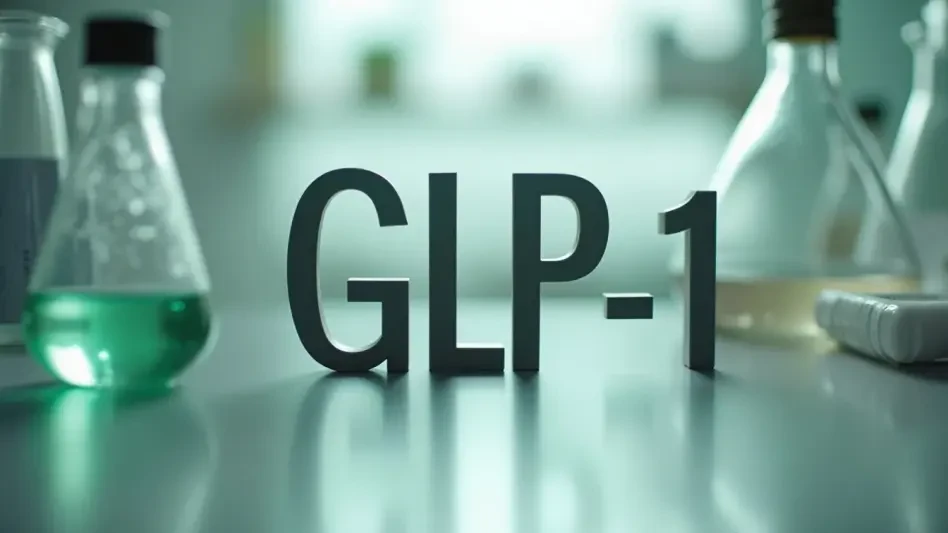A significant shift in the pharmaceutical landscape has emerged, sparking concern among patients dependent on GLP-1 medications for obesity and diabetes management. Recent regulatory actions have led to the cessation of compounded GLP-1 drugs, leaving patients facing a stark choice between expensive brand-name options such as Wegovy, Ozempic, and Mounjaro—now costing between $350 to $700 per month—and their previously accessible compounded alternatives priced at roughly $200. As accessibility dwindles, patients are grappling with altered prescriptions and complex treatment scenarios.
Overview of the GLP-1 Industry Landscape
The GLP-1 industry plays a crucial role in healthcare, particularly in obesity and diabetes management. These pharmaceuticals are vital in controlling appetite and blood sugar levels, significantly contributing to public health. Major market players like Novo Nordisk are central to this sector, leveraging technological advances to enhance drug efficacy. The industry’s landscape is shaped by stringent regulations that ensure safety and efficacy while also influencing market dynamics. The rise in demand for GLP-1 drugs underscores their significance in addressing common yet critical health issues.
Within this sector, various segments have emerged that focus on different patient needs, such as injectable therapies and oral medication. Technological influences like telehealth and personalized medicine are reshaping the way healthcare providers interact with patients and manage treatments. Companies producing these medications frequently navigate complex regulatory frameworks to bring new solutions to the market, striving to improve the quality of life for millions globally.
Key Trends Shaping the GLP-1 Market
Emerging Technologies and Market Drivers
The evolution of technology has introduced game-changing dynamics into the GLP-1 industry. Innovative drug delivery systems and personalized medicine approaches are enabling more efficient patient care and offering new opportunities for providers. As consumer behavior shifts towards a demand for more effective and convenient solutions, the industry adapts with continuous research and development, catering to evolving needs. These technological advancements help unlock fresh market opportunities, promising significant growth in the coming years.
Further trends include an increased focus on holistic treatment options, integrating lifestyle modifications with pharmaceutical therapy to optimize patient outcomes. As awareness of obesity and diabetes as critical health issues rises, the market witnesses a surge in demand, propelling investments into development and innovation. This dynamic environment fosters competitive growth among industry players, who strive to secure a substantial share.
Market Data and Future Projections
Recent market data indicates robust growth projections for the GLP-1 industry, with expectations of reaching $100 billion annually by 2030. Performance indicators show that demand for these drugs is consistently rising, driven by increasing rates of obesity and diabetes. This trajectory underscores the market’s resilience and potential for further expansion, despite existing challenges.
As insights into demographic shifts reveal a growing patient base among adults and older adults, companies are tailoring their strategies to capture these emerging segments. Such strategic moves suggest a promising outlook, as firms incorporate data-driven approaches to align product offerings with market demands. The GLP-1 industry’s future appears bright, bolstered by optimism in projections pointing to substantial opportunities for innovation and investment.
Industry Challenges and Complexities
The GLP-1 sector encounters notable challenges encompassing technological, regulatory, and market-driven aspects that must be navigated carefully. Technological hurdles include the development of advanced delivery systems to meet diverse patient needs. Regulatory changes, such as those affecting compounded medications, significantly influence market operations, leading to complexities in patient care continuity.
Companies are actively seeking solutions to mitigate these obstacles, including collaborations with regulatory bodies to ensure compliance and effectiveness. Strategic partnerships and innovative approaches are essential in overcoming these barriers, allowing firms to maintain patient trust and support. Despite hurdles, the industry remains steadfast in its mission to improve patient health outcomes, addressing multifaceted challenges concretely and constructively.
Regulatory Developments and Impacts
The regulatory landscape has witnessed notable shifts, impressing upon the GLP-1 industry the need for compliance and adaptation. Regulations play a pivotal role in dictating the production and distribution of pharmaceuticals, with a clear focus on patient safety. Recent developments have pushed companies to reevaluate their strategies, considering the legal and ethical implications of compounded pharmaceutical offerings versus brand-name medications.
Compliance has become central to industry practices, requiring organizations to implement robust security measures and ensure transparency throughout operations. This regulatory focus influences every aspect of the GLP-1 industry, from research and development to marketing and patient relations, with ongoing impacts on business models and strategic planning.
The Future of the GLP-1 Sector
Emerging technologies and innovative practices are expected to continue reshaping the GLP-1 landscape. As industry disruptors introduce new solutions, the focus aligns predictably with consumer preferences, emphasizing accessibility and efficacy. Growth areas include personalized medicine, patient-centric care, and integrated treatment approaches, all augmented by cutting-edge solutions.
Innovation drives future prospects, as companies invest in new research and development facilities to secure competitive advantages. Regulatory compliance remains a critical influencer, guiding progress and shaping industry strategies. The GLP-1 sector’s future involves balancing technological advancement, regulatory adherence, and consumer demands, ensuring sustained growth and relevance in healthcare.
Conclusion and Future Prospects
The findings reflect a dynamic and evolving industry fraught with both opportunities and obstacles. The GLP-1 market is poised for significant growth, driven by consumer needs and innovative practices. While regulatory changes pose challenges, they also offer pathways for strategic alignment and adaptation. In this fast-moving environment, embracing innovation and compliance can prepare companies for sustained expansion. For those invested in the GLP-1 sector, focusing on emerging technologies and fostering collaborative engagement will be crucial. Future considerations should prioritize patient-centered innovations and strategic resilience.









